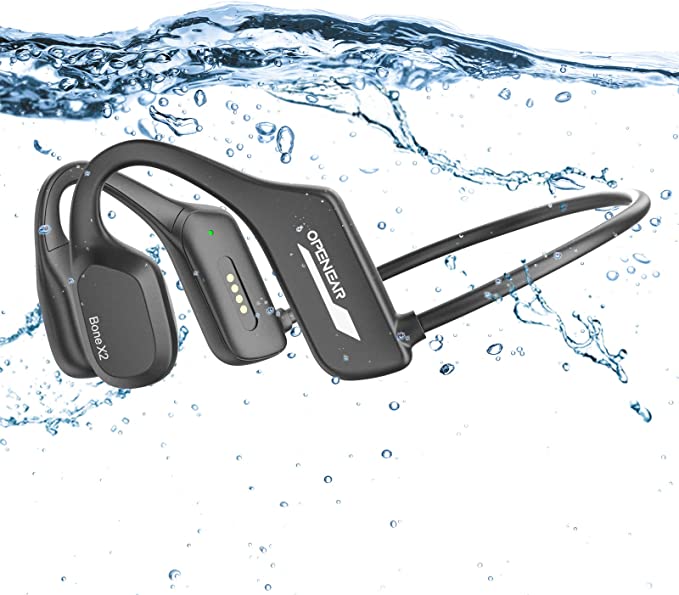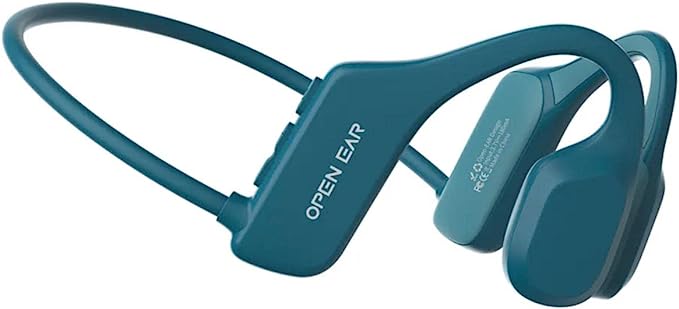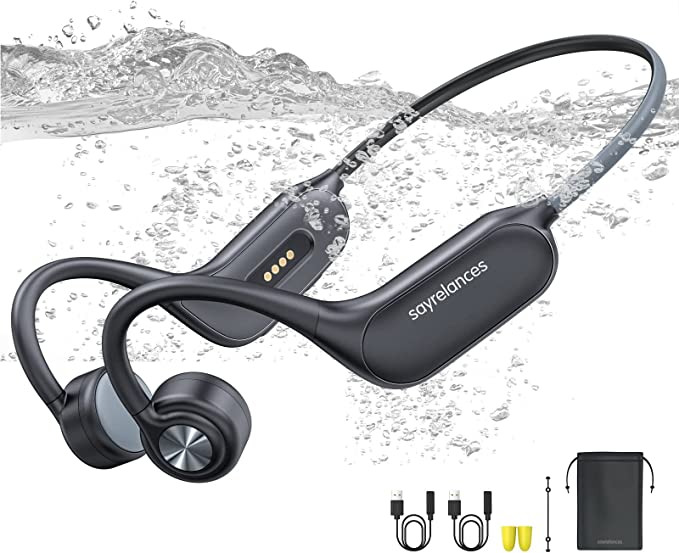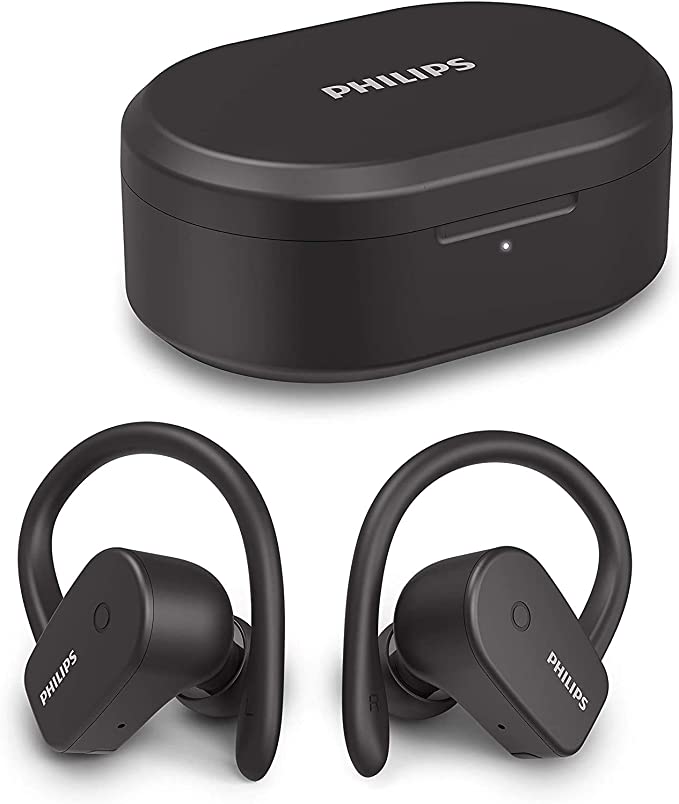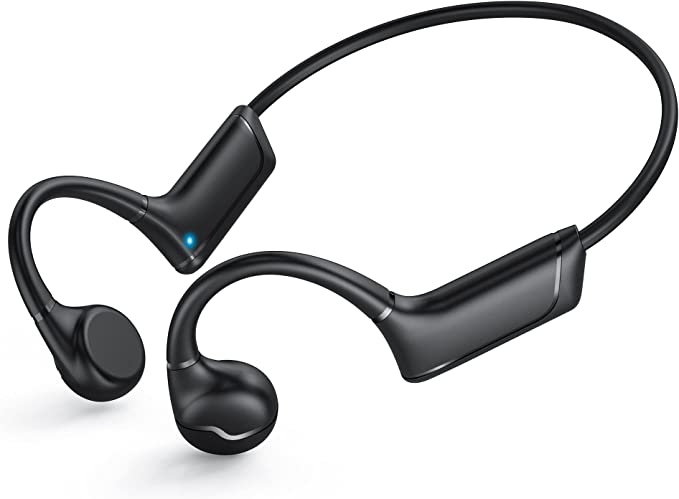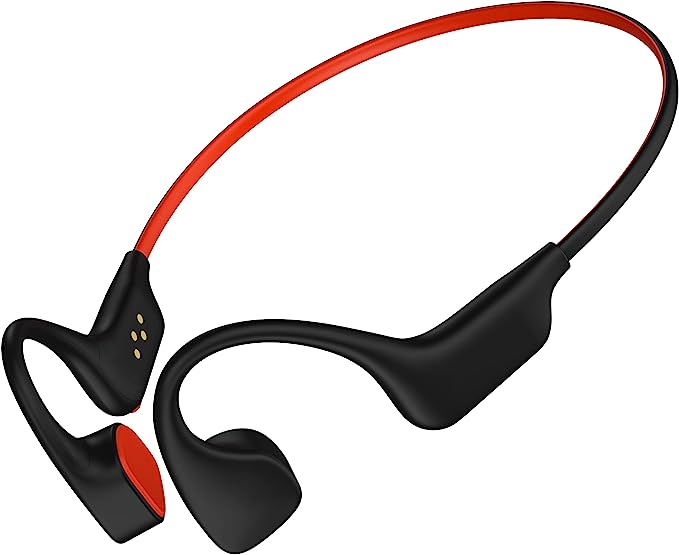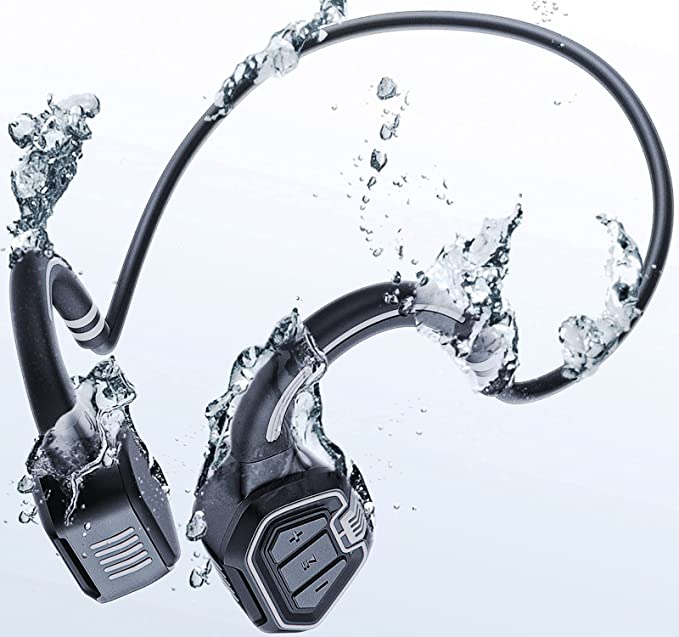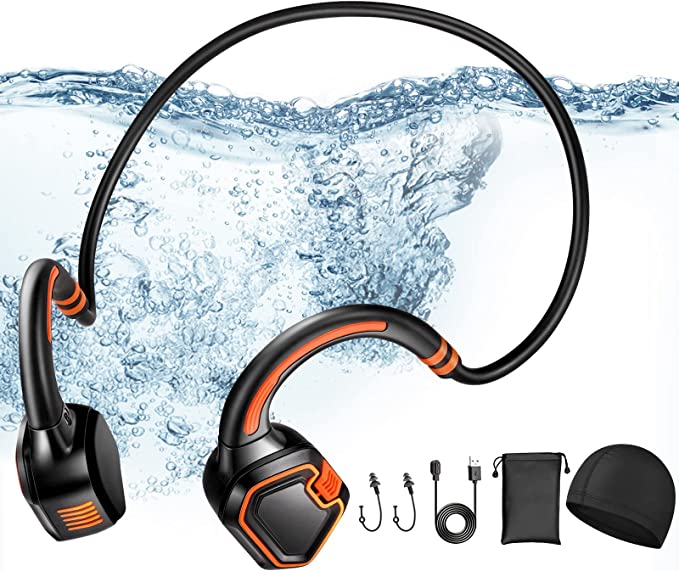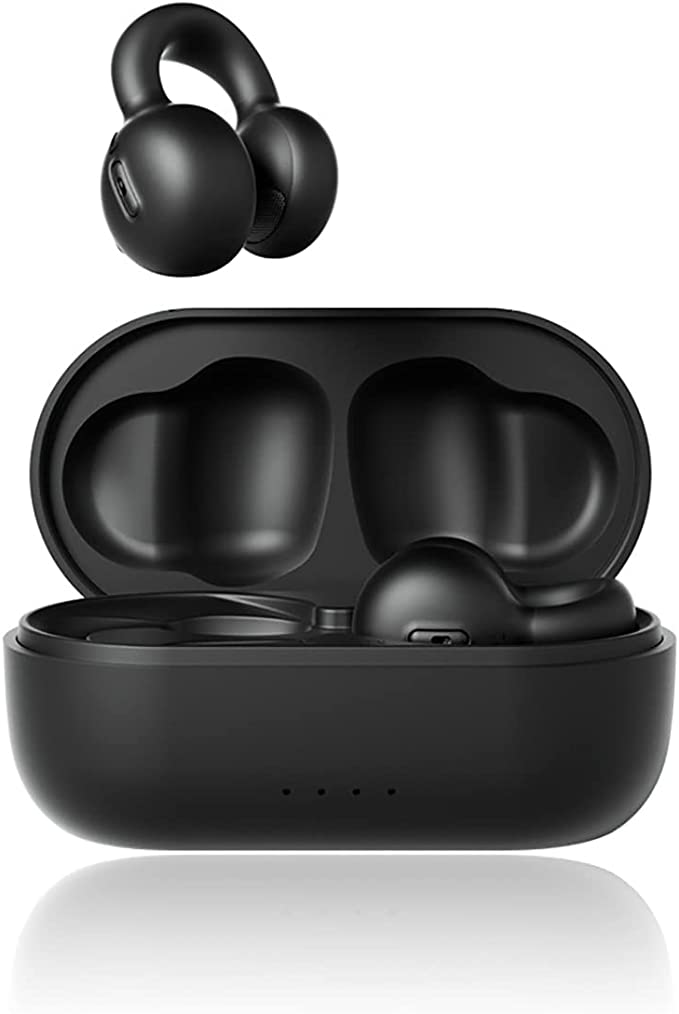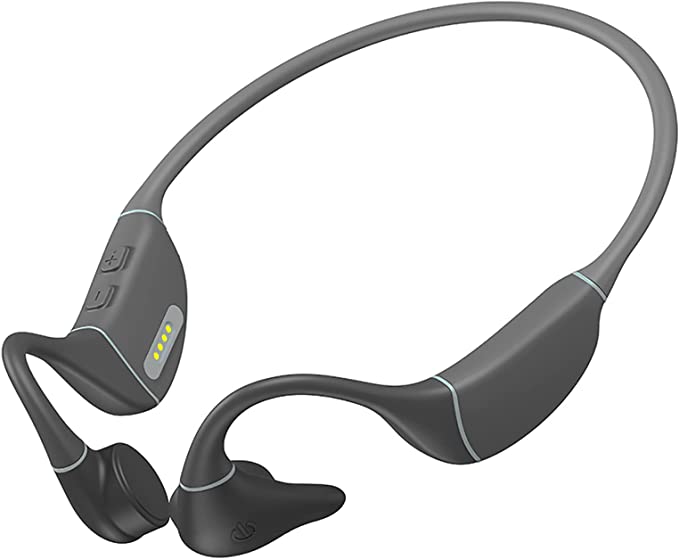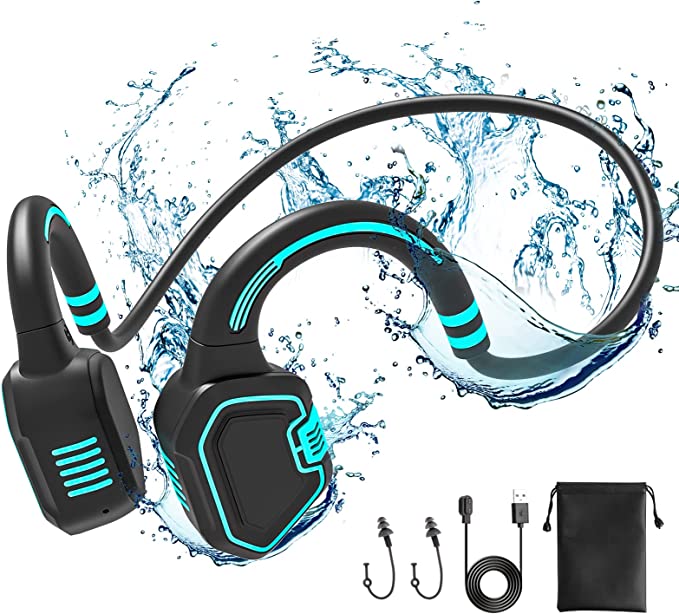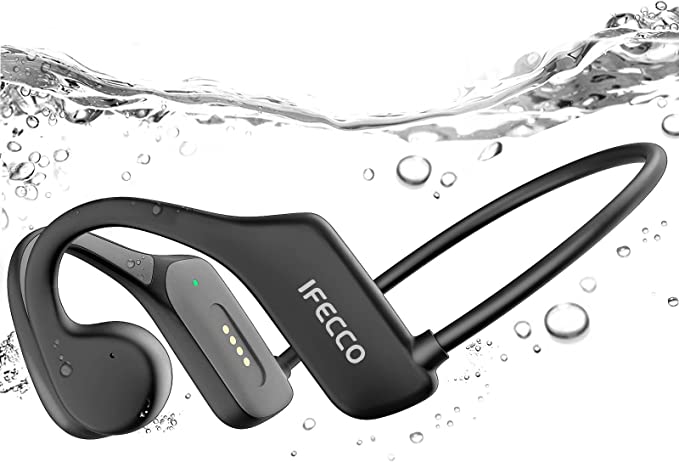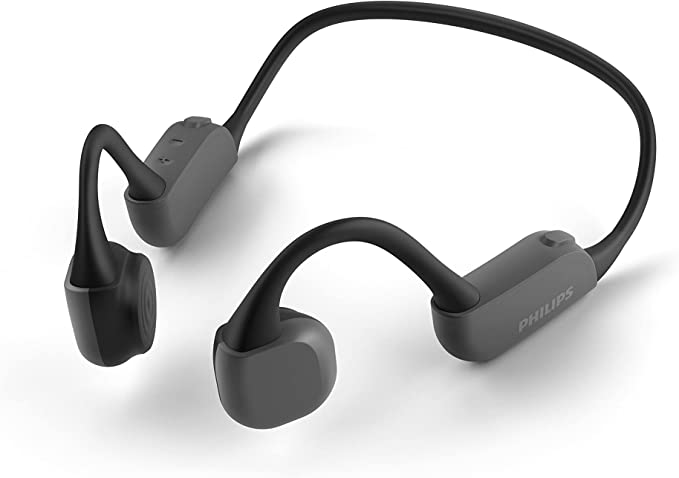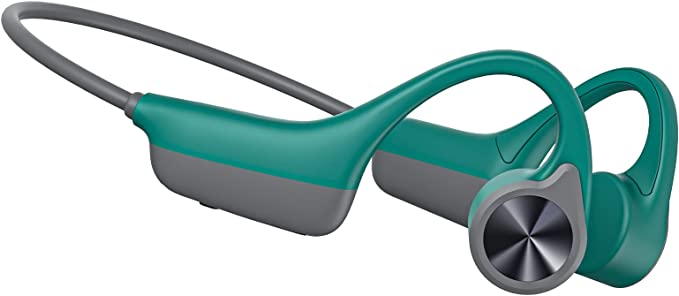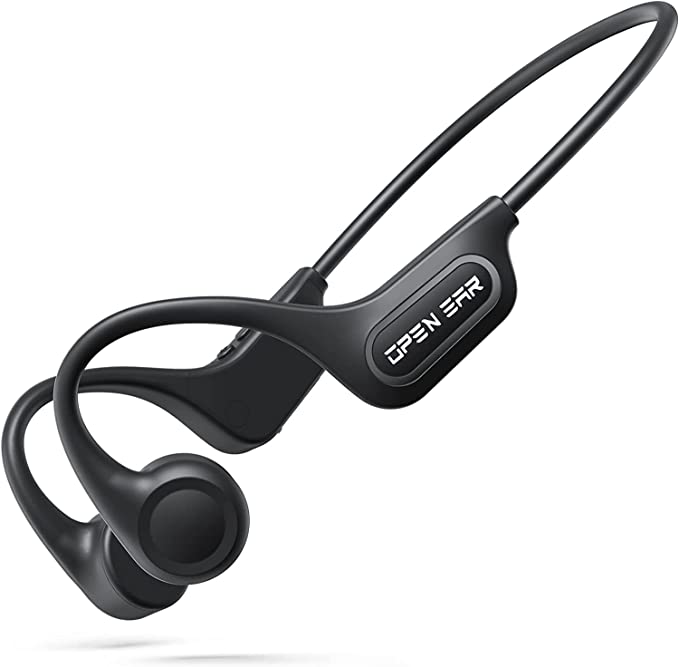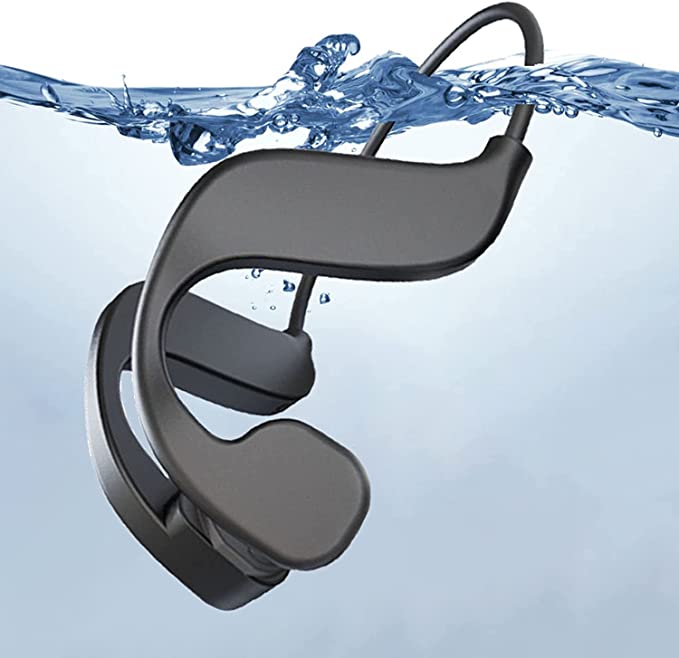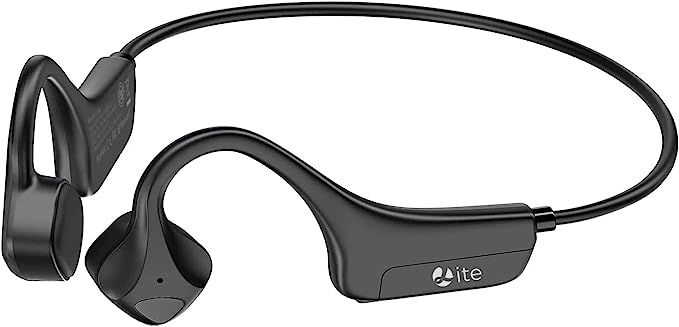Dsrva X18 Pro Bone Conduction Headphones: The Science of Sound Beneath the Waves
Update on May 30, 2025, 7:34 a.m.
Imagine this: you’re gliding through the cool, clear water of a pool, each stroke a rhythmic beat in your personal aquatic ballet. The world above is a muted landscape, and beneath the surface, there’s a unique tranquility. But what if you could add a soundtrack to this silent world? For many, the idea of listening to motivating music or an engaging podcast while swimming has long been a tantalizing dream, often dashed by the realities of electronics and water. Traditional headphones, your trusty companions on land, surrender almost instantly to the aquatic realm, their delicate components vulnerable, their sound distorted or silenced. This enduring challenge – marrying the immersive experience of swimming with the pleasure of personal audio – has spurred a fascinating journey into auditory science and rugged engineering.

Whispers Through Your Bones: The Magic of Hearing Differently
To understand how we can finally bring high-fidelity sound into the water, we first need to appreciate that our ears perceive sound in more ways than one. The most common pathway is air conduction. Sound waves travel through the air, are collected by your outer ear, and funneled down the ear canal to vibrate your eardrum. These vibrations are then mechanically transferred via tiny bones in the middle ear (the ossicles – malleus, incus, and stapes) to the cochlea, a spiral-shaped organ in the inner ear. Inside the cochlea, these mechanical vibrations are converted into electrical signals that the auditory nerve transmits to the brain, which we then interpret as sound.
But there’s another, less conventional, yet equally fascinating route: bone conduction. Instead of sound waves traveling through the air and your ear canal, bone conduction transmits sound vibrations directly through the bones of your skull to the inner ear, bypassing the eardrum and middle ear entirely. Perhaps the most famous, albeit anecdotal, illustration of this principle comes from the life of Ludwig van Beethoven. As the prodigious composer progressively lost his hearing, legend has it that he discovered he could still perceive the notes of his piano by clenching a wooden rod between his teeth and touching the other end to the instrument. The piano’s vibrations would travel through the rod, through his jawbone, and directly to his cochleae, allowing him to “hear” the music. While the specifics are debated by historians, the story beautifully captures the essence of bone conduction: sound can take an alternative, solid path to your inner sanctum of hearing.
Modern bone conduction headphones don’t require you to bite down on anything, thankfully. Instead, they employ small transducers that rest gently on your cheekbones, just in front of your ears. These transducers convert electrical audio signals into subtle mechanical vibrations. These vibrations travel through your cheekbones and other cranial bones directly to the cochlea, which processes them just as it would signals arriving via the eardrum. The remarkable result is that you hear the audio clearly, yet your ear canals remain completely open to the environment. This technology, initially explored for hearing aids and specialized communication systems (like those used by the military), has now elegantly dived into the world of consumer electronics, particularly for athletes.

Fortress Against the Flood: Decoding IP68 and Conquering Water’s Challenges
Bringing electronics into water is a formidable engineering task. For audio devices, the challenge is twofold: protecting the sensitive internal components from water damage and ensuring that sound can still be delivered effectively. This is where understanding Ingress Protection (IP) ratings becomes crucial. An IP rating, defined by the International Electrotechnical Commission (IEC) standard 60529, classifies the degree of protection provided by an enclosure against the intrusion of solid objects (like dust) and liquids (like water).
The Dsrva X18 Pro, for instance, boasts an IP68 rating. Let’s break that down: * The first digit, ‘6’, signifies its protection against solids. A ‘6’ means the device is completely dust-tight; no solid particles can find their way in. * The second digit, ‘8’, indicates its level of liquid ingress protection. An ‘8’ is one of the highest ratings, meaning the device is protected against continuous immersion in water under conditions specified by the manufacturer. For the Dsrva X18 Pro, the product information states it “can work typically under 10 meters underwater.” This implies rigorous sealing and material integrity designed to withstand the pressures and challenges of being submerged.
However, even with perfect waterproofing, there’s another aquatic hurdle for most wireless headphones: Bluetooth signals. Bluetooth technology, which typically operates in the 2.4 GHz radio frequency band, is excellent for wireless communication in air. But water is a very different medium. Water molecules are highly effective at absorbing radio waves at this frequency. Think of it like trying to shout across a very dense fog; your voice (the signal) gets scattered and absorbed, failing to reach its destination clearly. Similarly, Bluetooth signals struggle to penetrate water more than a few inches, making a stable connection between your phone (on the poolside) and your headphones (on your head underwater) practically impossible.
This is where a dedicated, onboard MP3 player becomes not just a feature, but a necessity for a true underwater audio experience. By storing music files directly on the headphones, the reliance on a tenuous Bluetooth link is eliminated. Your tunes are right there with you, impervious to water’s signal-blocking tendencies.

Meet the Dsrva X18 Pro: Where Science Gets Sporty
The Dsrva X18 Pro Bone Conduction Swimming Headphones are designed to leverage these scientific principles to deliver a seamless audio experience, particularly for aquatic athletes. Let’s dive into its key features and the science that makes them sing.
The Conductor’s Touch: Bone Conduction Transducers at Work
At the heart of the Dsrva X18 Pro are its bone conduction transducers. Instead of tiny speakers that push air into your ear canals, these transducers sit on your cheekbones, delivering sound as gentle vibrations. This is the core of the open-ear listening experience. * Principle at Play: As discussed, these vibrations travel through your cranial bones directly to your cochlea. Your brain doesn’t particularly care how the cochlea was stimulated—whether by vibrations from the eardrum or vibrations from your bones—it still processes these signals as sound. This means you perceive rich audio without anything covering or inserted into your ear canals. * Scenario in Mind: Imagine swimming your laps. With bone conduction, you can be fully immersed in your favorite playlist or follow a guided swim workout, yet still hear the splash of other swimmers, the voice of a coach on the deck, or an important poolside announcement. It’s about layered listening. * The Benefit Unpacked: This open-ear design offers several advantages. Firstly, for many, it’s significantly more comfortable than in-ear buds, especially for extended periods. There’s no pressure inside the ear canal and less risk of ear fatigue or irritation. Secondly, it promotes better ear hygiene, as the ear canal remains ventilated, reducing the likelihood of moisture build-up and a swimmer’s ear. One user review even highlighted that they “work great with my glasses too,” a common pain point with many over-ear or on-ear designs.

The Aquatic Shield: That Impressive IP68 Rating in Action
The IP68 rating isn’t just a label; it’s a testament to the headphones’ robust construction, specifically engineered for the demanding environment of water. * Principle at Play: Achieving an IP68 rating involves meticulous design of seals, gaskets, and casing materials that can prevent water ingress even when submerged under pressure. The “8” specifically means the device can handle continuous immersion beyond 1 meter, with the exact depth and duration defined by the manufacturer (in this case, “typically under 10 meters”). This involves testing against water jets and submersion to ensure the delicate electronics within remain dry and functional. * Scenario in Mind: Whether you’re doing vigorous flip turns in a chlorinated pool, enjoying a leisurely swim in a lake, or even, as the product description suggests, surfing or diving (within the specified limits), the IP68 rating provides the confidence that your headphones are built to withstand the experience. * The Benefit Unpacked: This level of waterproofing translates to durability and reliability. You don’t have to constantly worry about splashes or accidental submersion ruining your investment. It allows you to focus on your activity, knowing your audio companion is as ready for the water as you are.
Your Personal Subaquatic Playlist: The 32GB MP3 Digital Locker
To sidestep the aquatic blockade of Bluetooth signals, the Dsrva X18 Pro integrates a substantial 32GB internal memory, transforming it into a standalone MP3 player. * Principle at Play: By storing audio files locally (the product claims “up to 8000 songs,” which would depend on average file size and bitrate), the headphones become entirely self-sufficient for underwater listening. There’s no wireless signal to be absorbed by the water. Digital audio basics mean this storage can hold hours upon hours of music, podcasts, or audiobooks in common formats like MP3. The Q&A section confirms this design choice: “No, water will block the Bluetooth connection, please use MP3 mode underwater.” Loading music is described as being as simple as connecting the headphones to a computer via the provided magnetic data cable, where they appear like a USB flash drive. * Scenario in Mind: Picture yourself curating the perfect playlist for a long triathlon training swim, or loading up several podcast episodes for your daily laps. You can tailor your audio environment completely to your mood and workout intensity, all without needing your phone anywhere near the water. * The Benefit Unpacked: This feature grants true device-free listening freedom in the water. It means consistent, uninterrupted audio playback, no matter how deep you dive (within limits) or how far you swim from the water’s edge. It puts you in complete control of your underwater soundscape.
Beyond the Blue: Bluetooth 5.2 for Your Land Adventures
While optimized for swimming with its MP3 mode, the Dsrva X18 Pro doesn’t forget your activities on terra firma. It incorporates Bluetooth V5.2 for seamless wireless connectivity when you’re out of the water.
* Principle at Play: Bluetooth 5.2 is a modern iteration of the ubiquitous wireless standard, offering general improvements over older versions in areas like connection stability, energy efficiency, and potentially range and data transfer speed (though specific benefits vary by device implementation). This allows the headphones to pair with your smartphone or other Bluetooth-enabled devices. The product also mentions “noise-cancelling calls,” suggesting microphone technology designed to reduce ambient sound for clearer conversations – a valuable feature for calls on the go.
* Scenario in Mind: Imagine finishing your swim, toweling off, and immediately pairing your headphones to your phone to stream a running playlist as you head out for a jog. Or, taking a call while cycling or working out at the gym, without fumbling for your phone.
* The Benefit Unpacked: This dual-mode capability (MP3 for water, Bluetooth for land) makes the Dsrva X18 Pro a highly versatile audio companion. It’s not just a swimming headphone; it’s an all-around sports headphone ready for a multi-sport lifestyle, adapting to your environment and connectivity needs.

The Open-Ear Advantage: Stay Tuned In, and To Your World
The open-ear nature of bone conduction, as facilitated by the Dsrva X18 Pro, offers profound benefits beyond just comfort. It’s about maintaining a crucial connection to your surroundings. * Principle at Play: By leaving your ear canals unobstructed, bone conduction headphones allow you to hear ambient sounds naturally. This is vital for situational awareness – your brain’s ability to perceive and process environmental cues. This contrasts sharply with traditional in-ear or over-ear headphones that can isolate you, sometimes to a dangerous degree. * Scenario in Mind: Consider cycling through city streets where hearing traffic is paramount for safety. Or running on a shared path where you need to be aware of other pedestrians, cyclists, or approaching vehicles. Even in a gym, you might want to hear announcements or a workout partner. During a swim, as mentioned, it could be a coach’s instructions. * The Benefit Unpacked: Enhanced safety is a primary advantage, particularly for outdoor activities. Beyond safety, it allows for a more natural and less isolating listening experience. You can enjoy your audio while still feeling present and connected to the world around you, making conversations easier and reducing the feeling of being “blocked off.”
The Gravity Defier (0.07lb): Engineering for Unfettered Movement
The product description highlights a weight of “only 0.07lb” (approximately 31.75 grams), terming it “ultra light.” While another section lists “Item Weight” as 6.4 ounces (a significant discrepancy, but the 0.07lb figure is emphasized for its lightness), the pursuit of a low-mass design is critical for sports headphones. * Principle at Play: The physics of motion and ergonomics dictate that a lighter device, especially one worn on the head during dynamic activity, will be more stable and comfortable. Lower mass means less inertia, reducing the tendency for the headphones to shift, bounce, or slip during vigorous movements like running, jumping, or even sharp swimming turns. A secure fit is essential not just for comfort but also to maintain optimal contact for the bone conduction transducers. * Scenario in Mind: Think about the repetitive impact of running, the quick head turns while cycling, or the dynamic body rolls during freestyle swimming. A lightweight, well-balanced design aims to make the headphones feel like a natural extension of yourself, rather than a cumbersome accessory. * The Benefit Unpacked: A “barely-there” feel allows you to focus entirely on your performance and enjoyment of the activity, rather than being distracted by ill-fitting or heavy gear. This contributes to longer, more comfortable wear and a more immersive workout experience.
Effortless Harmony: Intuitive Controls for an Active Life
Effective control is paramount when you’re in motion, potentially with wet hands or an increased heart rate. The Dsrva X18 Pro mentions a “multifunction button” for easy controls. * Principle at Play: User interface (UI) and user experience (UX) design for active wearables prioritize simplicity, tactile feedback, and ease of access. Buttons need to be easily locatable and operable without requiring complex sequences or visual confirmation, especially in challenging environments like a pool. Typical functions include play/pause, volume adjustment, track skipping, answering calls, and activating a voice assistant. * Scenario in Mind: You’re mid-lap and want to skip to your power song, or you’re on a run and need to quickly adjust the volume as your surroundings change. The goal is to manage your audio with minimal disruption to your rhythm and focus. * The Benefit Unpacked: Well-designed controls enhance usability and reduce frustration, allowing you to seamlessly integrate your audio into your workout. This ensures the technology serves you, not the other way around, keeping your flow and concentration intact.
The Ripple Effect: Bone Conduction’s Echo in Other Fields
While the Dsrva X18 Pro beautifully exemplifies bone conduction for sports, it’s worth noting that this ingenious audio pathway has found applications far beyond the swimming pool or running track. Its ability to deliver sound without occluding the ear canal has made it invaluable in: * Hearing Assistance: For individuals with certain types of conductive hearing loss (where the outer or middle ear doesn’t transmit sound effectively), bone conduction hearing aids can provide a vital link to the auditory world. * Specialized Communications: In high-noise environments, such as those faced by military personnel or industrial workers, bone conduction headsets allow for clear communication while preserving awareness of crucial environmental sounds and enabling the use of ear protection. * Emerging Technologies: It’s also being explored in augmented reality (AR) and virtual reality (VR) systems to provide audio cues without blocking out real-world sounds, contributing to a more immersive and blended experience.
The Final Beat: Riding the Wave of Audio Innovation
The journey of sound from its source to our perception is a marvel of biology and physics. Technologies like bone conduction, coupled with robust engineering like IP68 waterproofing, are not just creating new gadgets; they are expanding the very possibilities of how and where we can experience audio. The Dsrva X18 Pro Bone Conduction Swimming Headphones stand as a compelling example of this synergy, orchestrating a solution that allows swimmers and athletes to weave their favorite soundscapes into even the most demanding activities. As human ingenuity continues to explore the frontiers of science, we can only anticipate even more remarkable ways to enhance and enrich our lives, one vibration, one splash, one perfectly timed beat at a time.

